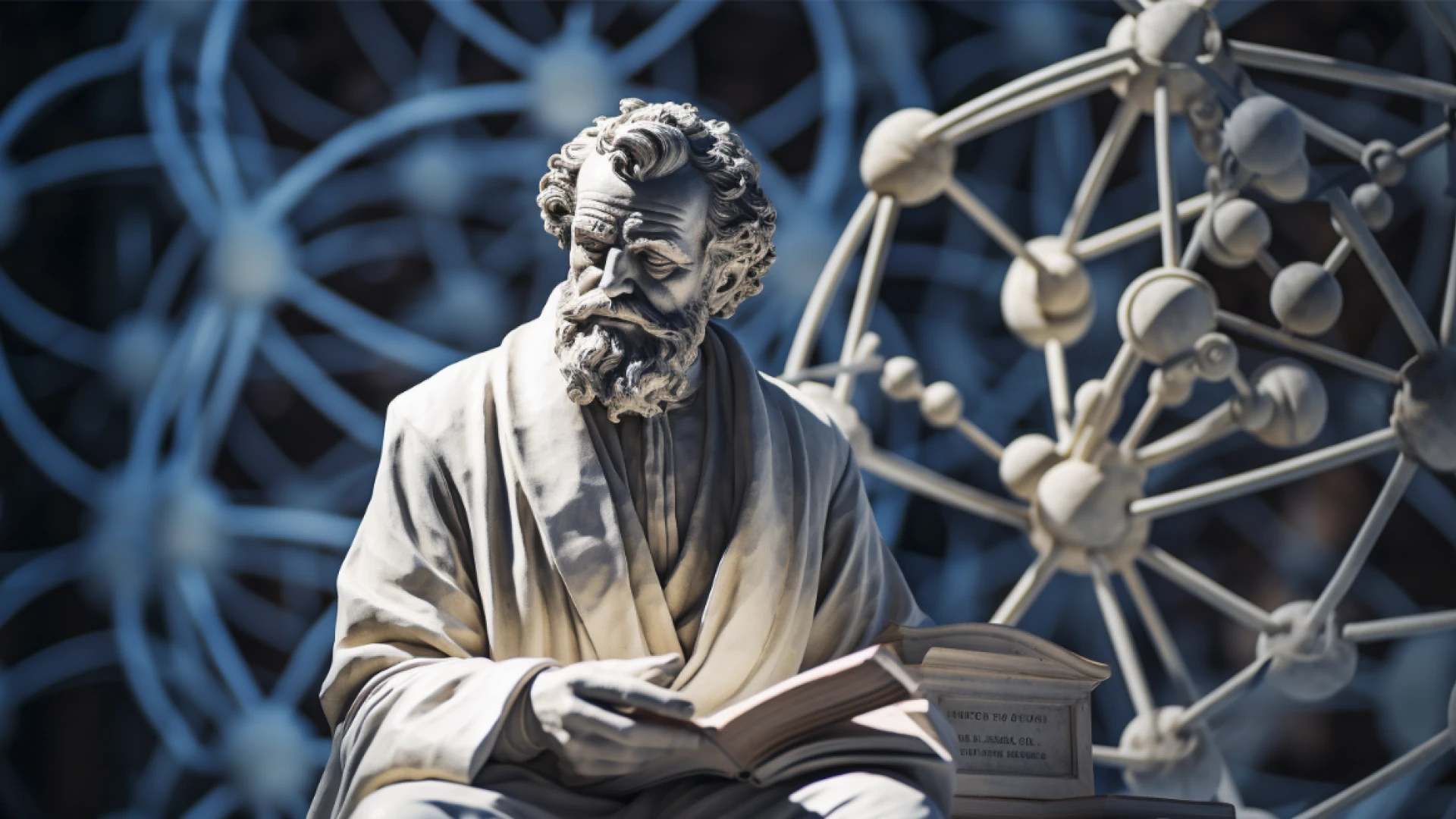
Aristotle, the ancient Greek philosopher and scientist, is often associated with vast contributions to many fields of knowledge, but his discoveries about the atom significantly diverged from the ideas of later scientists. He didn't support the atomic theory as it's known today–the concept that all matter is composed of indivisible units called atoms. Instead, he proposed that substances were made up of the four elements: Earth, Water, Air, and Fire. This theory explained changes in matter not through atomic rearrangements, but through the transformation of these elements into each other.
His approach to matter, which we know today was not accurate in the context of modern atomic theory, was deeply rooted in his philosophical understandings. Aristotle's views on substance emphasized form and matter, which led him to believe in continuous rather than atomistic nature of matter. This perspective laid the groundwork for many centuries of scientific and philosophical thought, influencing how people understood the physical world around them.
Aristotle did not make discoveries about the atom; instead, he proposed a theory where all matter was composed of four elements: earth, water, air, and fire. This theory, quite different from modern atomic theory, prevailed for centuries.
No one could say why any indivisible part would be in this place rather than that, as it must be either in this place or that.
Nature is a continuum and does not move by leaps and bounds.
If there were atoms, there would be a minimum size, and a minimum size could not be cut. But everything can be cut; therefore, there are no atoms.
Physics (4th century BC): Aristotle's treatise on nature where he counters the atomism of Democritus, advocating for the continuity of matter and opposing the concept of indivisible atoms.
Metaphysics (4th century BC): This book delves into the essence of substance and being, where Aristotle challenges the notion of atomism by discussing the nature of reality as combinations of matter and form.
On Generation and Corruption (4th century BC): Aristotle elaborates on his ideas regarding matter, form, and change, critiquing pre-Socratic atomists and suggesting that change occurs through the interaction of matter and form rather than through indivisible atoms.
Nicomachean Ethics (4th century BC): Although primarily focused on ethics, Aristotle indirectly addresses natural philosophy and the universe's nature, providing insights into his views on matter and form, relevant to the discussion of atomism.
Aristotle's contributions to various fields of knowledge were grounded in a unique approach that blended empirical observation with philosophical inquiry. His background and education set the stage for a methodology that would shape centuries of thought.
Born in 384 B.C. in Stagira, a small town on the northern coast of Greece, Aristotle was the son of Nichomachus, the court physician to the Macedonian royal family. This early exposure to the study of life and natural phenomena would influence his later inquisitiveness. As you might expect, his philosophical career began when he moved to Athens at the age of seventeen to join Plato's Academy, a center for learning unlike any other at the time.
Aristotle spent twenty years at the Academy, first as a student, then as a researcher and teacher. Under Plato's guidance, he delved into a wide range of subjects, developing a foundation that would serve him in his own pursuits. Although he revered his teacher, Aristotle eventually departed from Plato's idealistic views, proposing instead a more concrete approach that emphasized real-world observation and experience.
Your focus should be on Aristotle's methodology which marked a departure from prior philosophers’ approaches. He placed significant emphasis on empirical evidence and direct observation as the basis for knowledge. This empiricism led him to classify the sciences into three groups: theoretical (physics, metaphysics), practical (ethics, politics), and productive (rhetoric, poetics). Likewise, his work in logic culminated in the establishment of deductive reasoning, thus founding the field as a formal discipline. His inclination toward direct observation also heavily influenced his biological studies, where he emphasized classification based on features and functions.
Aristotle's profound investigations into the natural world led him to articulate a nuanced theory concerning the essence and composition of objects. His conceptualization of substance and form plays a pivotal role in his philosophical framework.

You might be curious about how Aristotle perceived the physical world around him. He didn't actually delve into the discovery of the atom as we understand it today, but he did lay foundational thoughts about stuff that makes up reality. Aristotle distinguished between matter—the substrate that underlies all tangible things—and form, which refers to the essence or characteristics that define a substance. He saw all physical objects as a combination of matter and form. For instance, a wooden table is wood in matter, whereas its design and functionality are its form.
His thinking extended to the four elements—earth, air, fire, and water—which he thought could transform into each other through the loss or acquisition of form. This was his way of making sense of mass and motion, describing them without the detailed understanding of atoms and molecules that we have today.
Aristotle elucidated the nature of objects through his theory of the Four Causes: Material, Formal, Efficient, and Final. Material Cause is the whatness of a thing, represented by the material it's composed of. In your pencil, the wood and graphite represent the Material Cause. Formal Cause is the arrangement of that material. It's the design of your pencil that allows you to write.
Efficient Cause is the source of an object's beginning or change, such as the carpenter who crafted your pencil. Lastly, Final Cause is the purpose—the reason you have a pencil is to write or draw. These four aspects are vital in Aristotle’s philosophical framework to explain objects, their creation, and their purpose within a broader scope of theory and philosophy.
Aristotle's exploration of the atom was profoundly different from that of Democritus, shaping the fabric of ancient physics and philosophy. While Democritus posited atoms as the ultimate, indivisible building blocks of matter, Aristotle introduced a contrasting viewpoint that challenged the very core of atomism.
Democritus imagined atoms as infinitesimally small, indivisible, and eternal. In your journey through the history of thought, you’ll find that Aristotle fundamentally disagreed with this concept. He did not believe in the existence of atoms as indivisible entities. Rather, Aristotle asserted that matter was continuous and could be divided endlessly without ever reaching a fundamental unit. His disbelief in atomism questioned the foundation of what you might consider the modern understanding of chemical physics.
A central element of Democritus' atomic theory was the existence of void, which allowed for the movement and interaction of atoms. Aristotle, on the other hand, took a different stance. He rejected the existence of a void entirely, proposing instead that the movement of matter was due to the combination and separation of the four classical elements: earth, fire, air, and water. To Aristotle, the properties of matter and natural phenomena were explained not through the behavior of atoms within a void, but by the purpose and nature of substances. This philosophical viewpoint placed a greater emphasis on the qualities and purposes of objects in nature, an argument intertwined deeply with his teleological view of philosophy and physics.
Before diving into Aristotle's theory, it's essential to understand that he sought to explain nature through a set of elements that were fundamental to all matter. He attributed distinct properties to these elements that, he believed, made up the physical world around you.
Aristotle proposed that everything you perceive around you is composed of four basic elements: earth, air, fire, and water. Each of these elements has its unique characteristics and occupies a certain position in the cosmos. The element earth was thought to be heavy and stable, naturally moving towards the center of the universe. On the other hand, air is seen as light and ascending, seeking its place above the earth. The element fire is even lighter than air and strives upward, while water is more fluid and settles below air.
Aristotle also ascribed four qualities to the elements: hot, cold, wet, and dry. These are not just tactile sensations but intrinsic properties that give matter its form and behavior. For instance, fire is both hot and dry, making it volatile and active. Water, characterized as cold and wet, is essential for life, representing adaptability and change. Moreover, air is hot and wet, associated with life-giving properties, while earth is both cold and dry, symbolizing solidity and stability. These properties were believed to interact in complex ways to form the diverse substances and materials you encounter daily.
Aristotle's views on atomism significantly shaped the way future generations approached the study of matter. His influence extended through the Medieval era into the Renaissance, affecting the course of scientific development.
You might find it interesting to know that while Aristotle didn't directly contribute to atomic theory, his four-element model of the universe dominated Medieval science and alchemy. Aristotle believed everything was composed of earth, air, fire, and water, which scientists and alchemists accepted for centuries. This blend of natural philosophy laid the foundation for the alchemical pursuit of transmuting base metals into noble ones.
When the Renaissance era sparked a resurgence in learning, Aristotle's works were critically re-examined. Science began to shift towards a more empirical approach, setting the stage for figures like Robert Boyle. Boyle challenged Aristotelian views and is often considered the father of modern chemistry due to his formulation of Boyle's Law and his work towards the scientific method. This transition marked a pivotal move from philosophical speculations to data-driven experiments in science.
End of content
No more pages to load